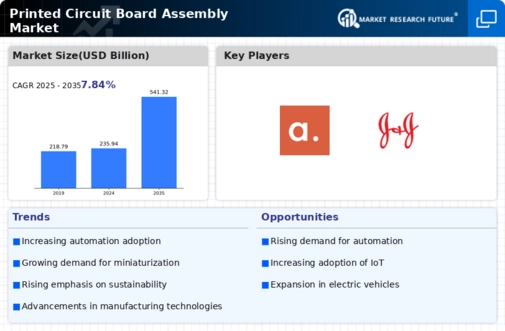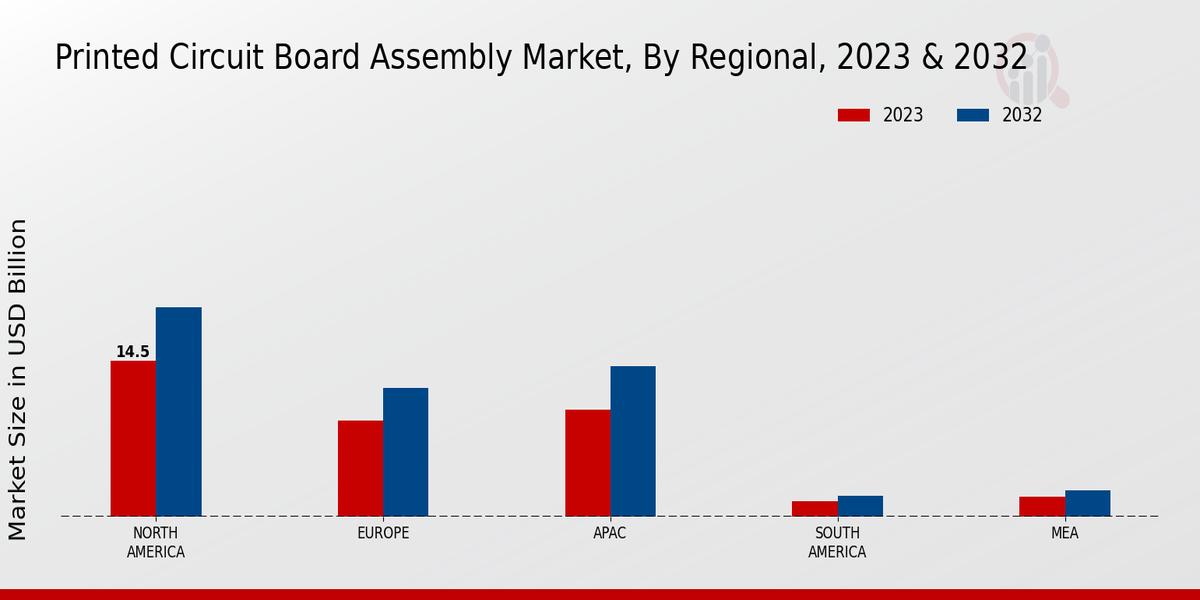Market Growth Projections
The Global Printed Circuit Board Assembly Market Industry is poised for substantial growth, with projections indicating a market size of 235.94 USD Billion in 2024 and an anticipated increase to 541.32 USD Billion by 2035. This growth trajectory suggests a compound annual growth rate of 7.84% from 2025 to 2035, reflecting the increasing demand for electronic components across various sectors. The expansion is driven by technological advancements, rising consumer electronics demand, and the growth of automotive and IoT applications. These factors collectively underscore the robust potential of the market in the coming years.
Technological Advancements
The Global Printed Circuit Board Assembly Market Industry is experiencing rapid technological advancements, particularly in automation and miniaturization. Innovations such as surface mount technology and advanced soldering techniques are enhancing production efficiency and product reliability. For instance, the integration of artificial intelligence in manufacturing processes is streamlining operations, reducing errors, and optimizing supply chains. This trend is likely to drive market growth as companies seek to adopt cutting-edge technologies to remain competitive. As a result, the market is projected to reach approximately 235.94 USD Billion in 2024, reflecting the increasing demand for high-quality electronic components.
Expansion of IoT Applications
The Internet of Things (IoT) is reshaping various industries, leading to a substantial increase in the demand for printed circuit board assemblies. The Global Printed Circuit Board Assembly Market Industry is witnessing a surge in IoT applications across sectors such as healthcare, agriculture, and smart cities. These applications require robust and efficient PCB solutions to facilitate connectivity and data processing. As IoT devices proliferate, the demand for high-quality PCB assemblies is expected to rise significantly, further driving market growth. This trend aligns with the broader technological advancements shaping the electronics landscape.
Growth in Automotive Electronics
The automotive sector is undergoing a transformation, with an increasing reliance on electronic components, thereby propelling the Global Printed Circuit Board Assembly Market Industry. The rise of electric vehicles and advanced driver-assistance systems is creating a heightened demand for sophisticated PCBs. As vehicles become more connected and automated, the need for reliable and efficient PCB assemblies becomes paramount. This trend is likely to contribute to a compound annual growth rate of 7.84% from 2025 to 2035, reflecting the automotive industry's shift towards more electronic-driven solutions.
Emerging Markets and Globalization
Emerging markets are playing a crucial role in the expansion of the Global Printed Circuit Board Assembly Market Industry. Countries in Asia-Pacific, Latin America, and Africa are witnessing rapid industrialization and urbanization, leading to increased demand for electronic products. Globalization is facilitating the entry of international players into these markets, enhancing competition and driving innovation. As these regions continue to develop, the demand for printed circuit boards is expected to rise, contributing to the overall market growth. This trend indicates a shift in manufacturing dynamics, with companies increasingly looking to tap into these burgeoning markets.
Rising Demand for Consumer Electronics
The surge in consumer electronics is a pivotal driver for the Global Printed Circuit Board Assembly Market Industry. With the proliferation of smartphones, tablets, and wearable devices, the demand for PCBs is escalating. According to industry reports, the consumer electronics sector is expected to contribute significantly to market growth, as manufacturers require efficient and reliable PCB assemblies to meet consumer expectations. This trend is anticipated to continue, with the market projected to expand to 541.32 USD Billion by 2035. The increasing integration of smart technologies in everyday devices further underscores the necessity for advanced PCB solutions.




